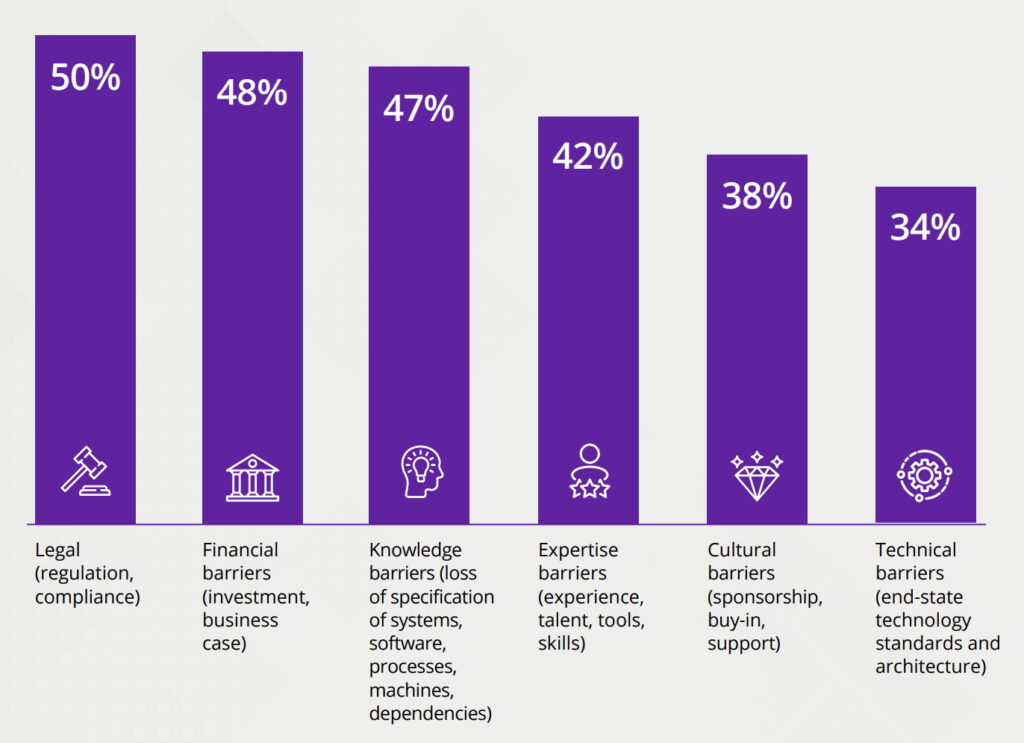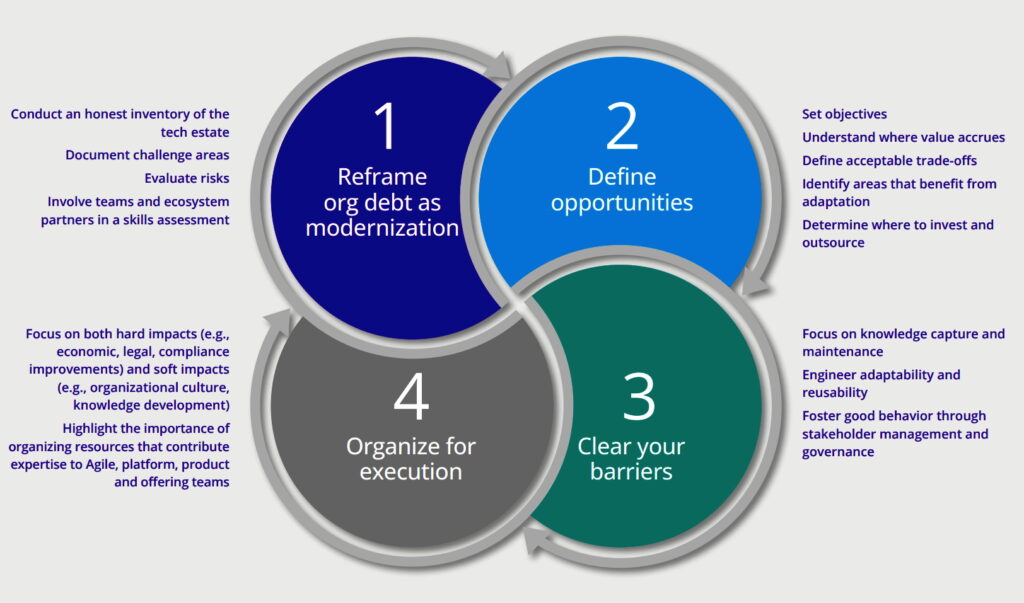A study of business leaders by DXC Technology has revealed that almost half (46%) of executives consider technical debt (tech debt), the implied cost of rework caused by choosing an "inferior but quick" solution over the "right" technology solution, stalls their ability to innovate and grow.

Source: Embracing Modernization: From technical debt to growth, DXC Technology 2023
Key Insights
The global survey of 750 C-suite information and technology executives revealed that 99% of respondents acknowledged tech debt as a risk. However, around 75% still believe that addressing it is the IT leadership’s sole responsibility.

Michael Corcoran, global lead of analytics and engineering at DXC, said, “We’re at a point in time where technology innovation is rapidly accelerating.
"The way we build, grow, and enable our teams and customers is changing and with that, our approach to managing the process of modernisation must as well. Sometimes the spread of tech debt across the organisation makes it hard for leaders to step outside of their team view, and this where a neutral third party can provide a holistic view that lets leaders consider a new perspective.”
Michael Corcoran
Four-step plan

Source: Embracing Modernization: From technical debt to growth, DXC Technology 2023
According to DXC, global businesses can save up to 39% from technical debt reduction, and retire 37% of redundant applications through a four-step plan which includes reframing organisational debt as modernisation, defining modernisation opportunities, clearing organisational barriers, and organising the execution of desired objectives and impact of the activities.

“Technical debt is an enduring topic across the intersection of business and technology, it’s long known about yet, often poorly understood. As it continues to accumulate, organisations around the world cite it as a top challenge, inhibiting their ability to transform and serve their customers into the future,” said Dave Reid, research director of DXC Leading Edge.




